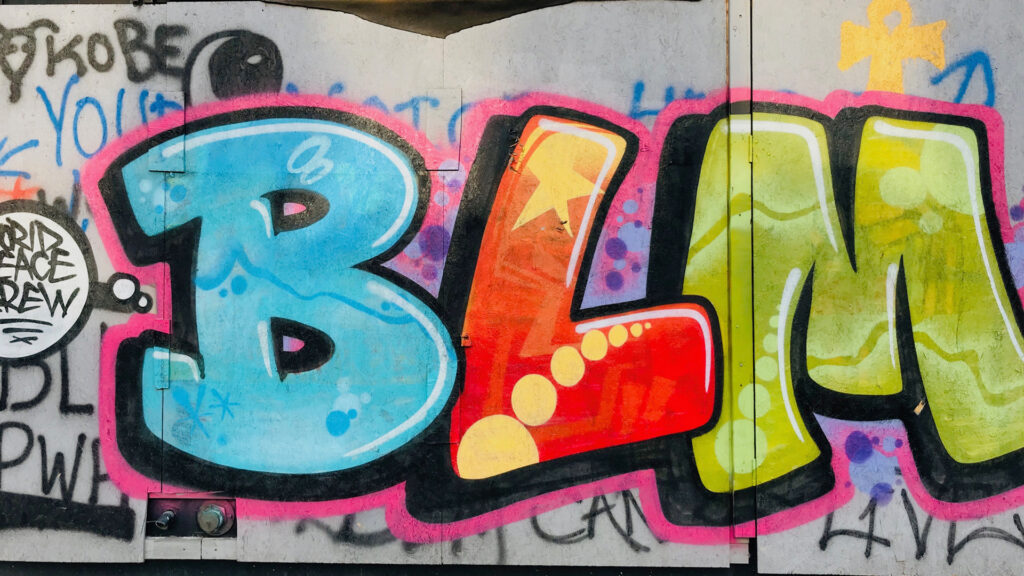This 3-part series on the dynamic nature of street art and graffiti—as both a symbol of cultural consciousness and a cultural commodity—highlights these genres as viable assets within the regional and global creative economy today. In this opening segment, the author shares a townie perspective.
Troy, NY is a historic town built on the foundations of fortunes gained during a heightened gilded era of development in the United States. One can celebrate the charming vibes of this post-industrial town nestled along the mighty Hudson River. Troy boasts a reputation as an increasingly eclectic enclave north of Manhattan—and Albany further still—that is home to a diverse community and a thriving arts scene, including strong examples of street art and graffiti that one might encounter in any lively urban (or non-urban) locale anywhere in the world. This, I believe, reflects street art and graffiti’s role as a kind of gravity within society: it is a symbol of cultural consciousness and engagement with a community audience—it is also a cultural commodity within the larger context of a global creative economy. The brief footnote here: my use of the terms ‘street art’ and ‘graffiti’ are somewhat interchangeable, however, the distinction that I have observed during my years as an arts professional is that community planned and supported expressions of street art aim to contribute to the artistic life of a community with care and respect.
Nevertheless, I became familiar with Troy’s artistic milieu during the mid-1990s (having done my undergrad at nearby Bennington College) and I relocated from Brooklyn during the deepest summer days of the 2020 pandemic-era (a welcomed redux encounter with the Hudson Valley). It has been a joy to behold a healthy street art and graffiti scene flourishing around Troy since taking up residency in these old digs. Alas, one cannot ignore the unfortunate acts of vandalism caused by graffiti in certain contexts—on sacred public spaces and historic buildings—yet the intentional placement of vibrant street art and the reverential gestures of calculated bombing—when it does not incur outright destruction—are truly inspirational. If we consider nascent forms of art-making dating back to the basic Paleolithic line drawings found in the caves of southern France, for example, our collective desire to mark our human existence by way of the ‘I WAS HERE’ declaration is irrefutable. Those magnificently crafted 17,000-year-old drawings that consist of raw markings and swaths of color are, essentially, the earliest form of sizing up a barren wall and tagging it with some signature of presence. Such outstanding examples of prehistoric art naturally point in the direction of an artistic expression that has, over millennia, evolved into divergent forms of communication with a would-be audience, thus the birth of art as anywhere—and eventually art in the street.
Our contemporary society is thriving with all categories of creative stimuli, and I think many of us are drawn to commodities and cultural contexts that provide a sense of connectivity. I would argue that the energy of great street art is unrivaled in this category—one is immediately brought in within the moment of stumbling upon it. The stylized tags, the brazen use of bold color, the oversized gestures, the symbolic code name of one’s chosen street alias, and the deft and dope use noxious aerosol paint are all aspects of graffiti to be celebrated. Although I will not further comment on acts of graffiti that cause outright damage, this is an inevitable facet of the conversation. We must welcome the ribald nature of the so-called ‘art-world-circus-show’ in all its unbridled medley, including the blatant criminality of certain practices on every level (street or no street as part of the equation).
Compelling works of street art and graffiti abound in towns and cities across the planet, proving that street artists and taggers are a prevalent international tribe with their own language, history, society, and sect. While many examples of street art and graffiti embody the anti-establishment tendencies that we associate with counterculture proclivities, this distinct sub-cult remains as one of the most compelling declarations of artistic identity in contemporary times. The multidimensional presentation of street art and graffiti as it prevails in Troy, NY provides a ‘townie perspective’ into the proliferating scale of the global genre today. I know we all look forward to seeing more uplifting displays of public art and street art in our town and in our world. In Troy, The Arts Center of the Capital Region along with several other Troy based institutions and residents are working to expand support for local artists through community arts initiatives that encourage local artists and taggers to step up their game in a way that kindles camaraderie and care in our beloved city.
PART II : In the next installment, we will explore the economies and community benefits of public mural programs.
Taliesin Thomas is an artist-philosopher, writer, and lecturer based in Troy, NY. Since 2007, she is the founding director of AW Asia, NY and the collection manager of Art Issue Editions, NY—two private art collections that are the foundation for collaborations and projects with artists and museums worldwide. Thomas has lectured and published widely on contemporary art. She is a faculty member at School of Visual Arts (SVA), NY and a visiting critic at the Arts Center for the Capital Region, NY. Thomas studied studio art, aesthetics, theory, and philosophy at Bennington College (BA), Columbia University (MA), and The Institute for Doctoral Studies in the Visual Arts (PhD).
